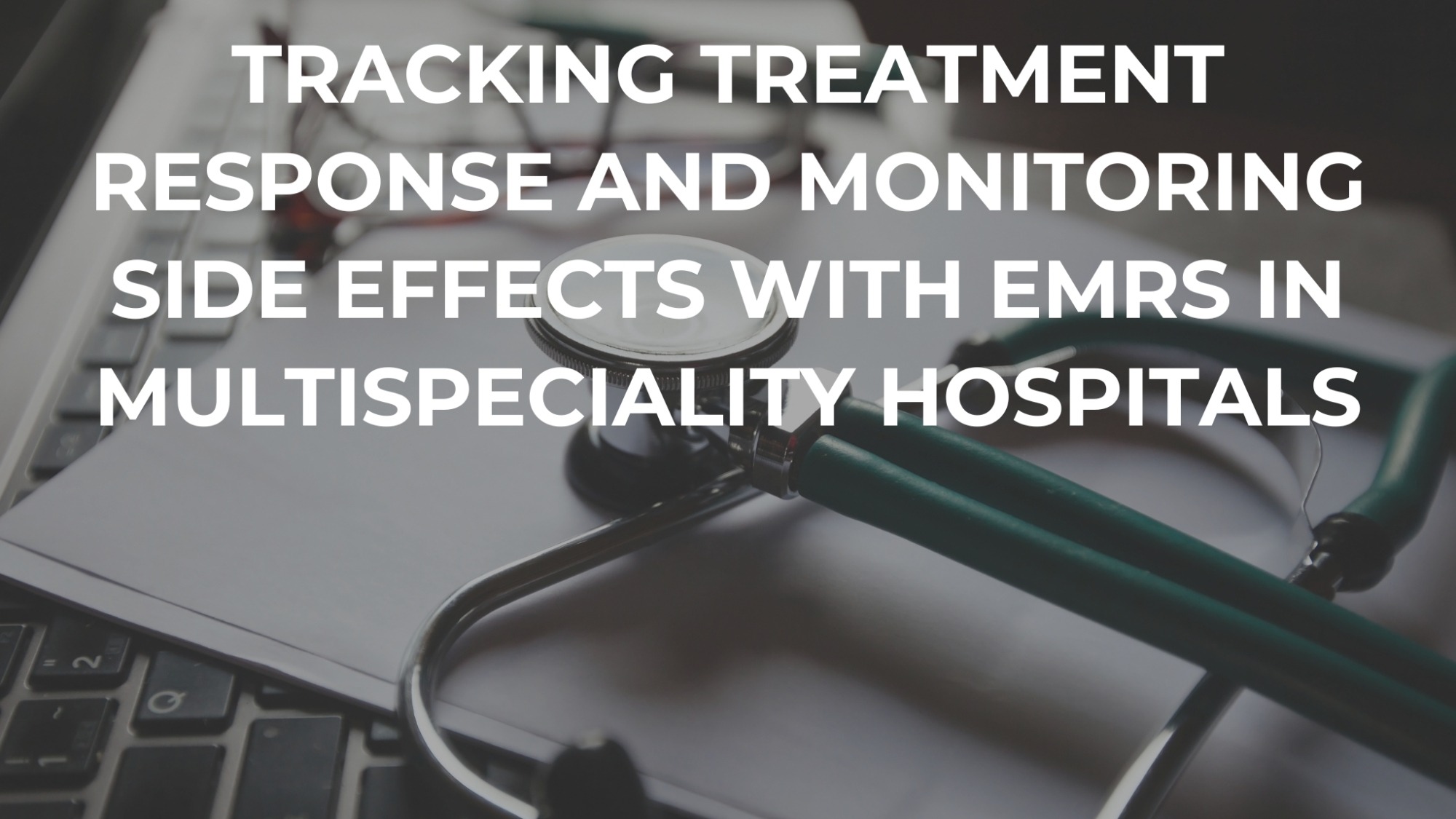In a multispecialty healthcare setting, effective communication and collaboration are paramount. When patients navigate care across different departments, ensuring a seamless treatment journey becomes crucial. Electronic Medical Records (EMRs) play a vital role in this process, particularly when it comes to tracking treatment response and monitoring side effects.
Challenges in Multispecialty Care:
- Fragmented Communication: Traditionally, information sharing between specialists can be cumbersome, relying on paper charts, faxed reports, or phone calls. This can lead to delays, miscommunication, and potential errors.
- Inconsistent Tracking: Without a centralized platform, tracking treatment progress and potential side effects can be inconsistent. This makes it difficult for specialists to assess overall patient response and adjust treatment plans effectively.
- Limited Patient Engagement: Patients often lack a clear picture of their overall care plan and may struggle to report side effects consistently across different specialties.
EMRs: A Game Changer for Multispecialty Care
EMRs offer a powerful solution to these challenges, fostering a more streamlined and coordinated approach to patient care:
- Centralized Data Repository: EMRs provide a single platform for capturing and sharing patient data, including medical history, diagnoses, treatment plans, medications, lab results, and imaging scans. This ensures all specialists involved have access to a comprehensive picture of the patient’s condition.
- Standardized Tracking Tools: EMR systems can be configured with standardized tools for tracking treatment response and side effects. This allows healthcare providers to document observations, record patient-reported experiences, and monitor trends over time.
- Improved Communication and Collaboration: EMRs facilitate secure communication between specialists through integrated messaging and annotation functionalities. This allows for real-time discussion of treatment progress, identification of potential side effects, and collaborative adjustments to the plan as needed.
- Enhanced Patient Engagement: Patient portals within EMRs empower patients to actively participate in their care journey. They can access their medical records, view treatment plans, and report side effects directly through the portal, ensuring their voices are heard throughout the care process.
Benefits of Tracking Treatment Response and Monitoring Side Effects with EMRs in Multispecialty Care:
- Improved Treatment Outcomes: By enabling comprehensive tracking and informed collaboration, EMRs contribute to more effective treatment plans, leading to better patient outcomes.
- Early Detection of Side Effects: With consistent monitoring, potential side effects can be identified and addressed promptly, minimizing patient discomfort and potential complications.
- Reduced Risk of Medication Errors: EMRs can help identify potential drug interactions or allergies, reducing the risk of medication errors and ensuring patient safety.
- Enhanced Patient Satisfaction: A more coordinated care experience with clear communication and active patient participation fosters greater patient satisfaction and trust in the healthcare system.
Conclusion:
In today’s multispecialty environment, EMRs are no longer an option, but a necessity. By harnessing the power of EMRs to track treatment response and monitor side effects, healthcare providers can ensure a more coordinated, effective, and patient-centered approach to care across specialties. As healthcare continues to evolve, leveraging the capabilities of EMRs will remain central to delivering exceptional patient care.


